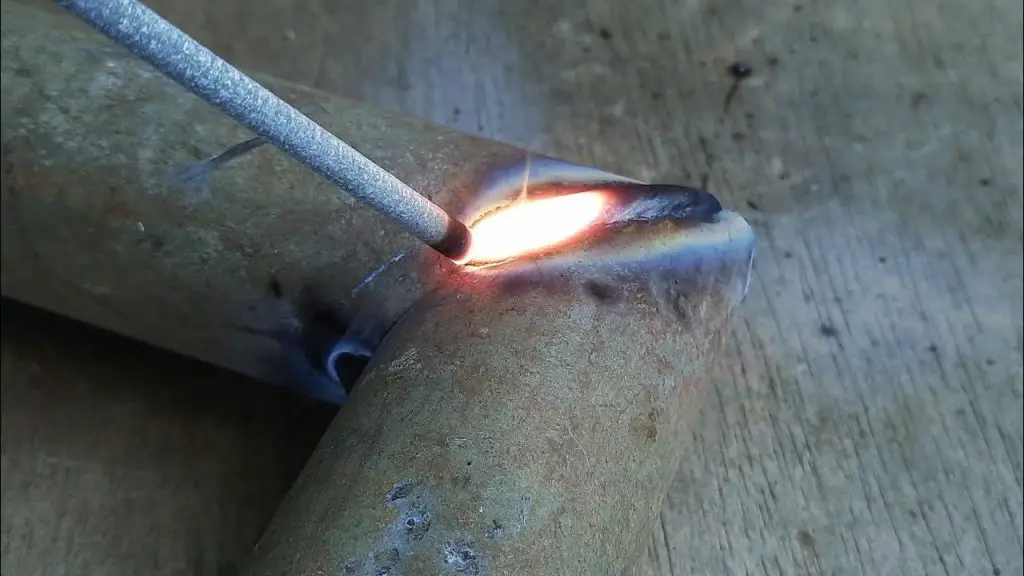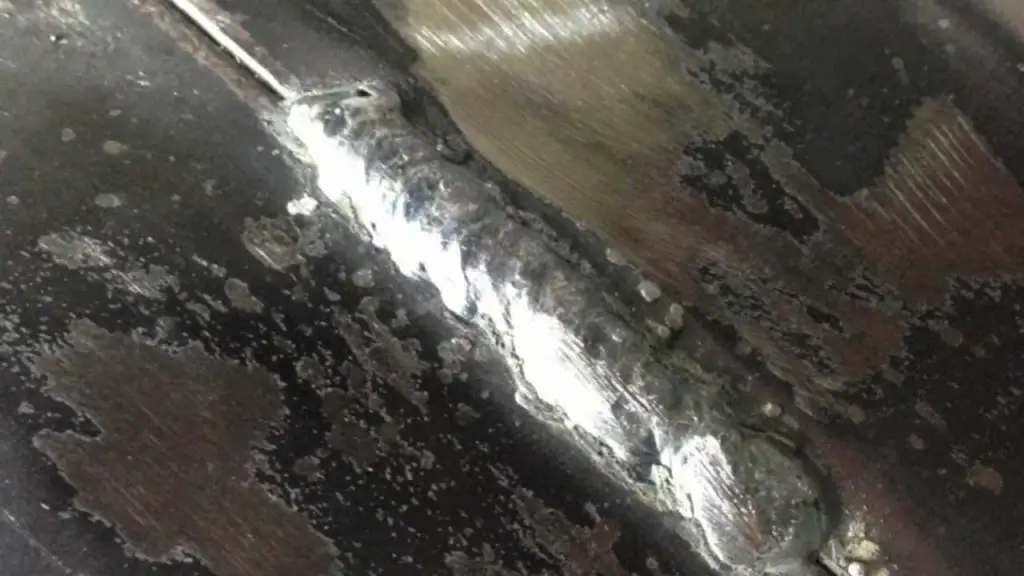Stick welding and flux core welding are popular techniques but differ in application. Stick welding is versatile and works well on thicker materials, while flux core welding is faster, produces less slag, and is ideal for thin or rusty metals. Consider the material type and project requirements when choosing.
I’ve had my fair share of experiences with various welding techniques. One question I often hear from fellow welders and enthusiasts is which method is better: stick or flux core welding? I’ve decided to share my insights on these two popular welding processes to help you navigate the world of welding and make the right choice for your projects.
| Material/Scenario | Stick Welding | Flux Core Welding |
|---|---|---|
| Thick Materials (1/8″ & up) | ★★★★★ | ★★★☆☆ |
| Thin Materials (under 1/8″) | ★★☆☆☆ | ★★★★★ |
| Rusty or Dirty Surfaces | ★★★☆☆ | ★★★★★ |
| Indoor Welding | ★★★★★ | ★★★☆☆ |
| Outdoor Welding | ★★★★☆ | ★★★★★ |
| Overhead Welding | ★★★★☆ | ★★★★★ |
| Vertical Welding | ★★★★☆ | ★★★★★ |
| Pipe Welding | ★★★★★ | ★★★☆☆ |
| Structural Steel | ★★★★★ | ★★★★☆ |
| Automotive Repair | ★★★☆☆ | ★★★★★ |
| Sheet Metal Fabrication | ★★☆☆☆ | ★★★★★ |
| Artistic Metalwork | ★★★★☆ | ★★★★☆ |
Table of Contents
Quick Summary
Stick
- Electrode Type: Flux-Coated Consumable
- Material Thickness: Thicker
- Welding Positions: All
- Metal Types: Ferrous metals and aluminum alloys
- Slag Production: More Slag
- Learning Curve: Steeper, required precise electrode control
- Cost: Cheaper equipment
Flux Core
- Electrode Type: Tubular Wire Filled with Flux
- Material Thickness: Thinner
- Welding Positions: All
- Metal Types: Only ferrous metals
- Slag Production: Less slag
- Learning Curve: Easier, wire-fed
- Cost: More expensive equipment
Stick Welding Process
Stick welding, also known as Shielded Metal Arc Welding (SMAW), is one of the oldest and most widely used welding techniques. It’s simple, versatile, and cost-effective, making it a go-to choice for many welding projects.
The stick welding process utilizes a flux-coated consumable electrode, a metal rod, to create an electric arc between the electrode and the base metal. The electric arc generates heat, melting the base metal and electrode, and forming a weld puddle. As the weld puddle cools down, it solidifies into a strong joint, bonding the base metals.
One unique aspect of stick welding is the flux coating on the electrode. When the flux melts, it creates a protective gas shield around the weld, preventing atmospheric contamination. The flux also produces slag, a layer of solid material that covers and protects the weld from oxidation and other contaminants while it cools down. Once the weld is cool, the slag must be chipped away to reveal the finished weld.
Stick welding is incredibly versatile, making it suitable for various applications. It works well with multiple metals, including steel, stainless steel, cast iron, and aluminum alloys. Stick welding is effective on thick materials and can be performed in all positions: flat, horizontal, vertical, and overhead.
It’s not well-suited for thin materials, as the high heat can cause warping or burn-through. The process tends to produce more spatter and slag than other welding techniques, requiring additional post-weld cleanup. The learning curve for stick welding can also be steep, as it requires precise electrode control and the ability to maintain a consistent arc length.

Flux Core Welding Process
Flux Core Arc Welding (FCAW) is a popular and versatile technique that has gained popularity due to its speed, adaptability, and suitability for various materials.
Flux core welding is a semi-automatic or automatic arc welding process that utilizes a continuously fed tubular wire electrode filled with flux to create an electric arc between the electrode and the base metal. The heat generated by the arc melts both the base metal and the wire electrode, forming a molten weld pool. As the weld pool cools, it solidifies to create a strong joint, fusing the base metals.
The flux core wire used in this process serves a dual purpose. As the wire electrode melts, the flux within the wire releases a shielding gas that protects the weld pool from atmospheric contamination. Additionally, the flux generates slag, a solid layer that covers the weld and guards it against oxidation and other impurities as it cools. Once the weld has cooled sufficiently, the slag can be removed to reveal the completed weld.
One of the primary advantages of flux core welding is its ability to work well with thin materials and metals that may be dirty or rusty, making it ideal for repair and maintenance work. The process is faster and generally produces less slag than stick welding. Flux core welding can be performed in all positions: flat, horizontal, vertical, and overhead.
It typically requires more expensive equipment and consumables than stick welding, and the wire feed system can be more complex, potentially leading to issues if improperly maintained. The shielding gas generated by the flux may not be as effective as that provided by external gas shielding in other processes, potentially resulting in a higher risk of weld porosity.

Welding Materials and Thickness
Regarding material compatibility, stick welding and flux core welding work well with various metals, including steel, stainless steel, and cast iron. However, stick welding is generally more versatile, as it can be used with some aluminum alloys and other specialty materials, while flux core welding is primarily limited to steel.
The primary differentiator between stick welding and flux core welding is their performance with different material thicknesses.
Stick welding can handle thick materials, generally starting from 1/8-inch thickness and up. The high heat input of stick welding allows for deep penetration, creating strong welds on heavy plates and structural components. On the other hand, stick welding can be challenging when dealing with thin materials, as the high heat may cause warping or burn-through.
Flux core excels with thin materials, typically less than 1/8-inch thick. The process allows for better control of heat input, reducing the risk of warping and burn-through on thin metals such as sheet metal or automotive body panels. Flux core welding can also handle thicker materials, but it is not the best choice if deep penetration and strong welds are critical for the project.
Another factor to consider is the condition of the base metal. Flux core welding is more forgiving when working with dirty or rusty surfaces, as the flux helps protect the weld pool from contaminants. Stick welding, on the other hand, generally requires cleaner surfaces to ensure a strong, defect-free weld.
Learning Curve
Stick welding is often considered to have a steeper learning curve for beginners. The technique requires precise electrode control, maintaining a consistent arc length, and adapting to flat, horizontal, vertical, and overhead positions.
Also, proper electrode manipulation is crucial to avoid common issues like sticking, arc blow, and inconsistent welds. Stick welding also demands good hand-eye coordination and an understanding of the right electrode for a given material and application.
Flux core welding is generally considered easier to learn for beginners, particularly those with experience with wire-fed processes like MIG welding. Flux core welding relies on a wire feed system, providing a more consistent arc and requiring less manual dexterity than stick welding.
However, flux core welding still demands attention to detail, such as adjusting the wire feed speed and voltage settings to match the material thickness and welding position. The technique requires knowing how to set up and maintain the wire feed system, troubleshoot wire feeding issues, and choose the appropriate wire for the job.
Welding Position Flexibility
Stick welding is known for its versatility in handling different welding positions. The process can be performed in all four standard welding positions: flat, horizontal, vertical, and overhead. This adaptability is due to the manual control of the electrode, which allows the welder to manipulate the arc and molten puddle in various orientations.
However, this flexibility also contributes to the steeper learning curve of stick welding, as mastering the technique in each position demands practice and skill development.
Flux core welding can also be performed in all four welding positions. The wire feed system provides a consistent arc that can be controlled in various positions with the proper adjustments to the wire feed speed and voltage settings. Flux core welding’s ability to handle different positions makes it popular for numerous applications, from structural steel erection to automotive repairs.
Vertical and overhead welding with flux core may require specific wire types or shielding gas combinations to ensure strong, defect-free welds.
Cost
Stick welding is generally considered a more cost-effective option when compared to flux core welding. The equipment required for stick welding is relatively simple and affordable, typically consisting of a power source, electrode holder, ground clamp, and welding leads. Consumables for stick welding are also relatively inexpensive and widely available.
Stick welding may have higher labor costs due to its slower speed and the need for post-weld cleanup.
On the other hand, flux core welding tends to have higher costs associated with equipment and consumables. The welding setup requires a wire feed system. These components can make the initial investment in flux core welding equipment more expensive than stick welding.
Flux core welding consumables, such as tubular wire electrode, are generally more costly than stick welding electrodes. Flux core welding can be more efficient regarding labor costs, as it is a faster process and typically requires less post-weld cleanup than stick welding.
Conclusion
I can attest that both processes offer unique advantages and challenges, which makes understanding their differences essential when selecting the proper welding technique for your projects. The choice between stick welding and flux core welding ultimately depends on various factors, including material type and thickness, surface condition, welding position, learning curve, and cost.
Stick welding is known for its versatility, ability to handle thicker materials and compatibility with a broader range of materials. While flux core welding excels with thin materials, is more forgiving on dirty or rusty surfaces, and is generally easier for beginners to learn.
